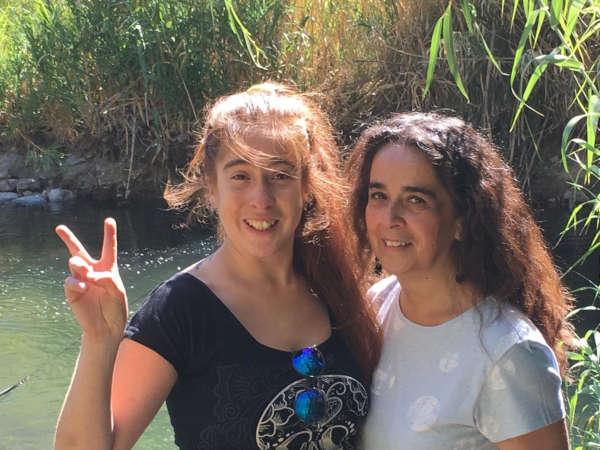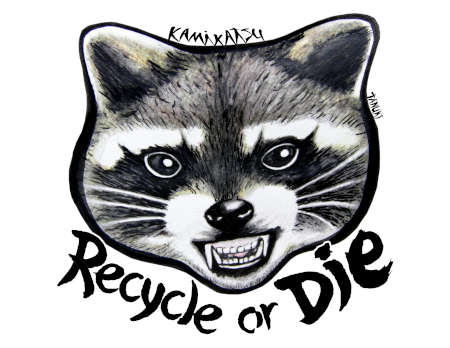−What do you do?
Romina: I have a degree in visual
arts, photography and performatic artist. I am also a restorer and
conservator of the movable cultural heritage.
−You have talent,
right? Where did you study?
Romina: I studied at
the University of Chile
−I heard you went around Japan. What is
the most interesting in Japan?
Romina: About
collecting garbage system because Chili doesn’t have a good system
yet. I live in a small village and the residents don't care about the
garbage. They mixed all garbage to gather even though some can be
recycled. I didn’t want to put them all in a container.
So I usually carried recycle garbage like bins, cans, pet-bottles on
my back by bus to the next village and throw them away because that
village collects them separately. I wanted to know about the Japanese
garbage system.

Romina san and her mother
−I see. You visited a garbage factory in my
city, didn’t you? What did you think of it?
Romina:
It is a huge factory. Everything is controlled systematically. I
watched a big refuse incinerator. A large crane were mixing garbage at
first. A staff kindly showed us the crane scooped garbage and put them
into the refuse incinerator. There were a few people controlling in
the operating room which looked like a transportation system room.
− I was surprised to watch it.
Romina: Then
we watched recyclables separated. I knew plastic garbage turns into
many items including shirts and so on. I understand how Japan collects
garbage and recycles it.
−But I think Japan should manage
recycle percentage up.
Romina: So I went to
Kamikatsucho. I heard Kamikatsucho wants to be garbage free town and
many people from the world visit there. They are interested in the
Kamikatsu way. I also wanted to know how it is. They accepted me for
free for about one month. I could stay and work.
−What did you do there?
Romina: I worked with
people who related garbage issues. I made posters which showed the
Kamikatsu ways because I’m a painter. I’ll show you my works. Here you
are.

− Thank you. What nice posters! It must be great help for
Kamikatsucho.
Romina: And I made many accessories
which are old Japanese slippers called waraji.
−I know Waraji
and I used them in my childhood.
Romina: I also
made many big waraji slippers. The garbage center sells them.
−What did you learn about garbage in Kamikatsucho?
Romina:
A lot. The town has no garbage collecting system, except for those who
need help
−How do they throw their garbage away?
Romina: There is a garbage center. People carry the garbage
by themselves there. But not much. And some items such as clothing,
cups, plates, bowls and so on are put on the shelves. Everyone can
take and to use them for free.
−It’s a nice system, isn’t it?
Romina: Yes, it is. The waste from each home is also
used to make bags, toys, dolls, warajis and other accessories. They
sell them. Many visitors who are interested in the Kamikatsu way buy
them as souvenirs.
−It’s a nice system.
Romina:
All garbage is separated in 34 categories in Kamikatsucho.
−Too many.
Romina: Yes, it is. But it’s great help
for Kamikatsucho to reduce the garbage. It can recycle over 80% of the
garbage.
−Great. Now Kamaikatsucho plans to recycle 100% in
2020.
Romina: I think they can make it.
−I
hope so. By the way, do you have any plans for the garbage?
Romina: I am planning to use the Kamikatsu system in
my village.
I will persuade the residents to separate their
garbage.
−You can make it.
Romina: Thank
you.
(2019年2月2日掲載)